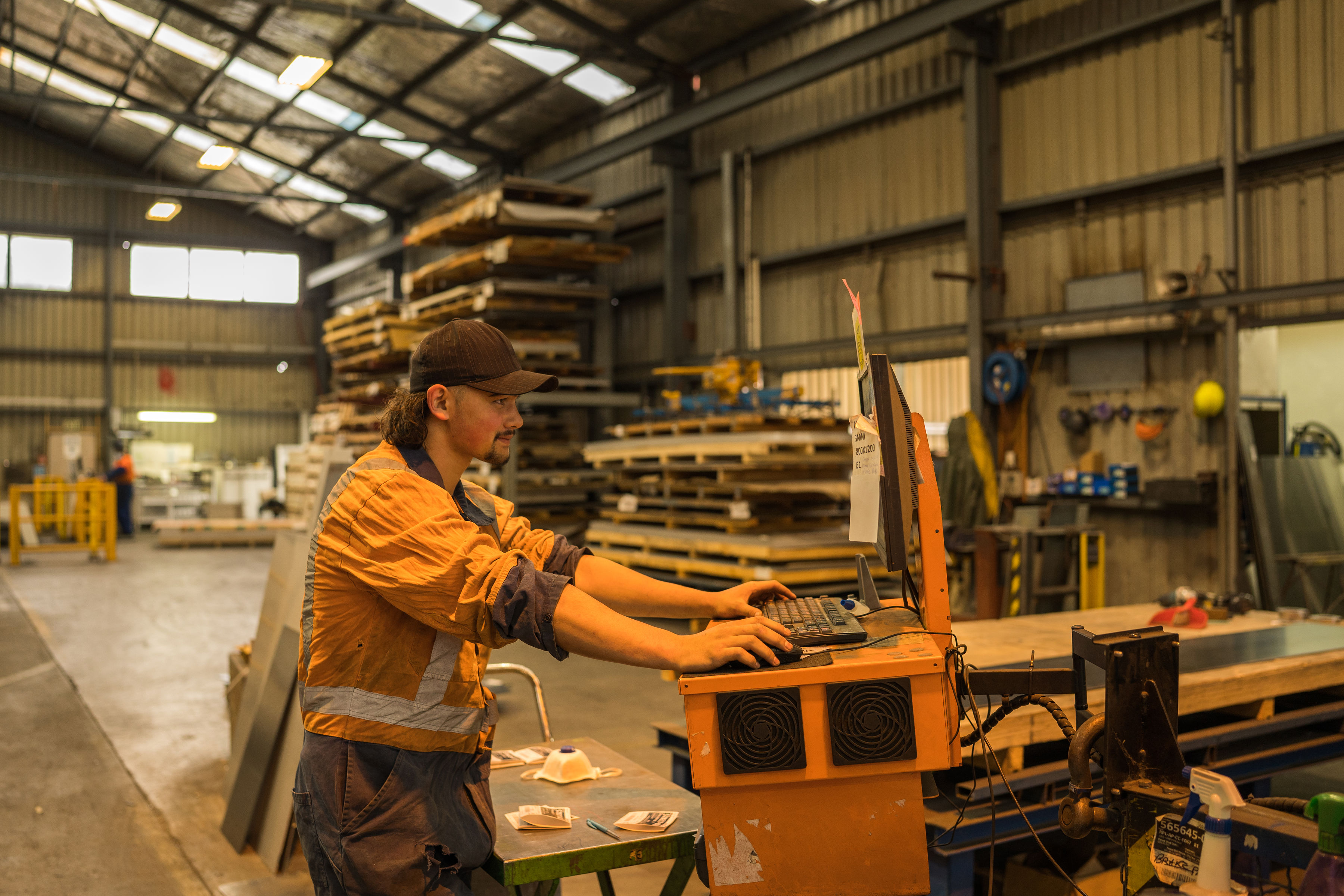What we have heard - Freight, Logistics & Warehousing
Utanga, Whakakaupapa, Whare Pūkainga
On this page

Man with rolled up overalls looking at a computer screen in a warehouse with pallets in the background.
What we’ve heard
Manawatū-Whanganui is the Freight, Logistics and Warehousing hub of the central North Island. With increasing levels of sector investment and growth, as well as far-reaching workforce coverage throughout the rohe, this sector continues to be vital to the economy. Several key distribution centres are located in our region, including Toyota NZ and Foodstuffs, and we are host to one of the 3 national airports that can transport freight around the clock. Expansion is also planned within the rail industry, which is expected to grow exponentially through projects such as the KiwiRail Regional Freight Hub, Marton RailHub and the Te Utanganui Central New Zealand Distribution Hub.
Given the scale of influence this sector has on and around the rohe, as well as a wealth of opportunities for growth, the Regional Skills Leadership Group (RSLG) has decided to focus on the Freight, Logistics and Warehousing sector as part of this Regional Workforce Plan refresh. We need to ensure that our kaimahi, employers, whānau and mokopuna have access to the training needed to take advantage of these opportunities in the future.
As the RSLG, our understanding of the current and future skills demand helps ensure a resilient labour market for our people. Kōrero we held with those currently working in the sector, including employers, kaimahi, and training providers has highlighted various challenges, barriers, and opportunities for skill attainment and needs identification. While each district has distinct challenges, many of our findings were consistent across the rohe. Key messages that emerged were:
-
Career pathways into the sector need to improve. Exposure to the sector for school students should begin in Year 10 and be followed by more intensive Trade Academy and work experience opportunities for Year 12 and 13 learners. “Kids aren’t being guided towards a career in freight and logistics. We can’t get young people to work here as they’re only getting limited exposure to the industry at school” – Stephen Hansen, PTS Logistics Ltd.
-
Disparities between parts of the region in driver licensing training provision sees many kaimahi traveling outside of their district to gain their licence (including forklift and class 1-5). Recent announcements from Waka Kotahi around the establishment of new regional roles are intended to alleviate these disparities. However, as the system currently stands there are major accessibility barriers for kaimahi. “Our drivers need to travel all the way to Palmerston North [from Dannevirke] to access theory training and testing for their Class 2-5. This is costly for us as it means a lot of time away from work.” – Lina Day, Dannevirke Carriers.
-
There is demand for increased provision of ‘micro-credentials’ as a tool to supplement full qualifications to enable learners to upskill and reskill at different stages of their lives. Tailoring a micro-credential to the Freight, Logistics and Warehousing sector to respond to the evolving needs of industry, particularly to technological changes, needs to be a priority.
-
Given the importance of the sector, it would be beneficial to enhance the collaboration of skills planning across the region. With large scale projects underway and on the horizon a widened strategic approach to skills and workforce planning is necessary. This will ensure that employers have access to kaimahi with the appropriate skills, which in turn lends itself to a thriving regional economy.
Freight, Logistics & Warehousing Actions
The Manawatū-Whanganui RSLG will:
-
Continue to support Regional Economic Development Agencies (EDAs) in their strategic workforce planning for Manawatū-Whanganui to create linkages between projected skill and the wider Manawatū-Whanganui labour market. This will include but is not limited to projects such as Te Utanganui (Central NZ Distribution Hub) and the Palmerston North hospital upgrade. Playing a role in workforce planning for regionally strategic projects will allow for a better understanding of future skills across the rohe and what training is needed to support our kaimahi, employers, whānau and mokopuna.
- Pilot an ‘Educators and Enterprises’ session whereby career advisors are connected with industry in the district to showcase the breadth of opportunities for ākonga. The development of this pilot will need to be at a district-level and be in collaboration with economic development agencies, iwi, schools, training providers, the Ministry of Education and industries.

